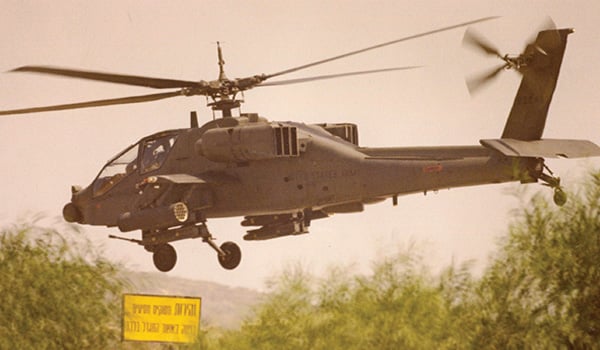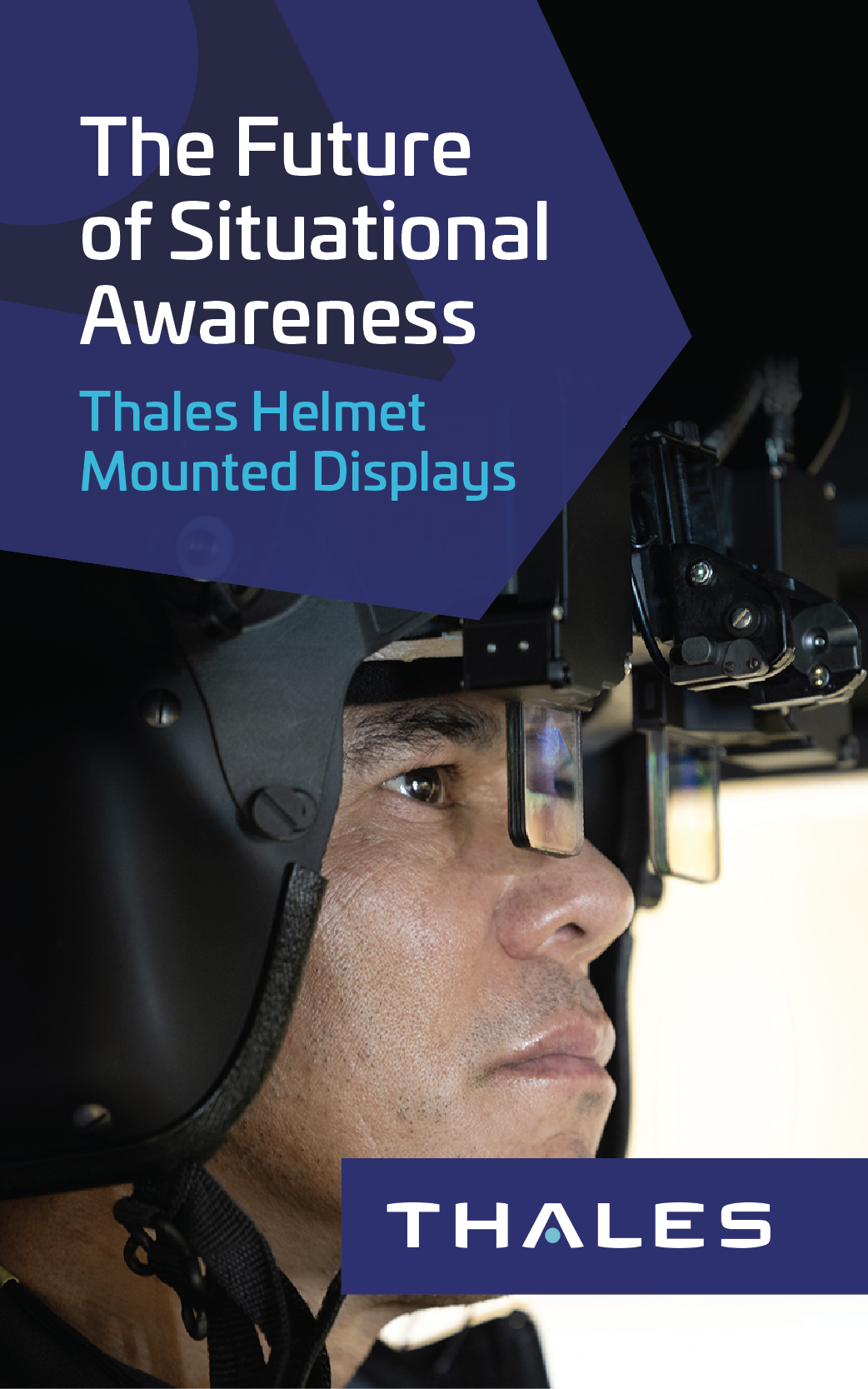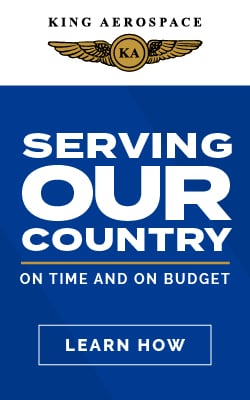
By General Robert M. Shoemaker, Ret.: At the start of the fourth decade of Army Aviation, the U.S. Army had just finished its withdrawal from Vietnam. Retrenchment rather ·than expansion was the order of the day. The production of new aviators was cut back from its peak of over 7,800 in 1969 to an annual total of only 1,255 in 1973. Aviation School activities were consolidated at Ft. Rucker, AL; Ft. Wolters, TX was closed, and individual aviator training at Ft. Stewart, GA was ended. During the 1970s, production of new aircraft was sharply curtailed. The spares production base atrophied as the smaller Army fed on the abundance of spares left over from war-time stocks. Aviation materiel managers gave priority to development programs for new attack and troop lift helicopters and to product improvement programs for the helicopters brought back from Vietnam. But the major aviation story of the decade was the officer aviator’s search for an identity. A discussion of the identity crisis is at the end of this summary.

The Army selected Sikorsky’s Utility Tactical Transport Aircraft System (UTTAS) in December 1976 and designated it the UH-60 Black Hawk./ U.S. ARMY FILE PHOTOS
In the 1960s, Army Aviation could claim to have been at the forefront of change and progress in the Army; from the Howze Board, through Air Assault testing, and the fighting in Vietnam. But in the 1970s, the Army as a whole went through a wrenching process of rebuilding, reorganizing, and refocusing. Army Aviation can claim a prominent – but not preeminentv – role in this decade of transition.
The Army had to recruit its soldiers in a draft-free environment, with little support and often active hostility from the media, academia, and even elements of government. At the same time it was necessary to rebuild an NCO Corps which had been badly used up during the Vietnam war, and to retrain an Officer Corps which tried to compensate, often poorly, for the lack of trained sergeants. It was a decade of austere budgets, and so many shortages of people and materiel that an Army Chief of Staff, GEN Shy Meyer, described the force as a “hollow army”.
The Formation of MASSTER
But even while the Army was beset with the extraordinary challenges of reshaping and rebuilding, Army leaders in Washington had the wisdom to commit scarce resources to a substantial investment in the Army’s future. A test and experimentation command (initially called MASSTER, later TCATA, then TEXCOM) was activated at Ft. Hood, TX with several important areas of investigation. One of the MASSTER tasks was to conduct troop tests of an Air Cavalry Combat Brigade (ACCB). In order to get a troop test unit, the 1st Armored division at Ft. Hood in 1971 was reflagged with the 1st Cavalry Division colors and reorganized into the Triple Capability (TRICAP) configuration. The First Team’s 1st Brigade (Armor) included two tank battalions and one mechanized infantry battalion, the 2d Brigade (ACCB test unit) was made up of one Air Cavalry Squadron with large troops of 31 helicopters, and a new unit called an Attack Helicopter Squadron with troops composed of 12 Scouts (OH-58) and 21 Cobra/TOW. The ACCB also had an organic Support Battalion with supply, maintenance, and transportation capabilities including a company of 16 Chinooks. The 3d Brigade (Air Mobile) consisted of three light infantry battalions. The 227th Assault Helicopter Battalion with 60 troop carrying Hueys and 12 Cobras was added to the normal division troops.
Evaluating TRICAP
Although the TRICAP Division was organized for pragmatic reasons having to do with resource availability and principally to provide a test bed for the ACCB, the division looked so interesting it was decided to assign MASSTER the additional task of testing and evaluating the TRICAP division itself. A series of ACCB and TRICAP troop tests was conducted at Ft. Hood in 1971 and 1972. They resulted in the Department of the Army decision to make the Air Cavalry Combat Brigade a separate brigade (6th Cavalry Brigade) and to assign it to III Corps at Ft. Hood. The TRICAP tests showed that the TRICAP division worked in the field and could be controlled and supported. But analysis of the Army troop basis and likely deployment scenarios developed no compelling reasons why the Army should add a sixth type division (TRICAP) to the five already in the force structure (Infantry, Armored, Mechanized Infantry, Airborne Infantry, and Air Assault). Therefore, at the conclusion of the tests, DA directed that the 1st Cavalry Division be converted to a standard Armored Division.

The AH-64 Apache got full-rate production go ahead in March 1982…
With the return of the Army from Vietnam, the legacy of the Air Assault Division was retained in the colors of the 101st Airborne Division (Air Assault). This division had converted to the Air Assault configuration in Vietnam in 1969 and, upon return to Ft. Campbell, KY, enthusiastically took up the challenge as the Army’s only air assault division. A major high point was the movement of the entire division to Germany in 1976 where it participated successfully in the annual REFORGER exercise.
A pivotal aviation event occurred in October 1975 when approximately 50 senior Army leaders assembled at Ft. Hood for TRAINCON 75; two days of demonstrations and conferences on the operations, tactics, and training of Army Aviation units. The group included the Army Chief of Staff and the Commanding Generals of TRADOC, FORSCOM, DARCOM, Army Corps, Divisions, and Branch Training Centers. The day and night live fire demonstrations put on by the 6th Cavalry Brigade (Air Combat) were focused on the Warsaw Pact threat. At the meeting the top leaders of the Army renewed their commitment for a strong aviation force with modernized equipment as an integral part of Army forces.
This strong support was demonstrated by the designation of helicopter systems as two of the “big five’’ high priority development programs for the 1970s. By the end of the decade, these development efforts paid off with the start of production and fielding of the UH-60 Black Hawk, a true squad carrier; and successful development of the soon-to-be-fielded AH-64 Apache. (The top quality of these helicopters was demonstrated by their superb battlefield performance in later years in Panama and Southwest Asia.) Principal product improvement programs were the upgrade of the Chinook helicopters to the much more capable Delta configuration and a series of incremental improvements to the OH-58 Scout and AH-1 Cobra.
Emerging Night Doctrine
There were smaller, but significant, materiel developments during the decade. The promise of true 24 hour, all-weather helicopter capability took a step forward as emphasis was placed on systems for night vision, target acquisition, fire control, and position location. Rudimentary experiments conducted by MASSTER in 1972 using first generation night vision goggles, developed originally for ground use, showed the promise (and limitations) of image intensification devices to permit combat flying under most night conditions. During the decade these devices were modified and improved to enhance their capability for helicopter use. Development of target acquisition and fire control components brought improved direct vision optics, infrared viewing devices, helmet mounted sights, mast mounted optics, and use of fiber optics.
There was experimentation and development in ways to enhance survivability of helicopters: paints to reduce optical as well as infrared and radar signatures, cockpits with flat instead of curved plexiglass to reduce reflective glint, instruments to warn crews of enemy radar operation and lock-on, and shielding to screen exhaust heat in order to reduce vulnerability to heat-seeking warheads. While many of the developments appeared to be helpful, experiments at Ft. Hunter Ligget and Ft. Hood, and the Ansbach trials in Germany continued to show that suitable flight tactics in the Nap of the Earth (NOE) remained the aviator’s primary way to survive and win. No breakthroughs were made in hiding helicopters on the ground – although LTG Robert R. Williams made the tongue-in cheek suggestion that choppers be rolled over and allowed to screw themselves into the earth.
The cumulative impact of these materiel activities contributed to some significant secondary effects on the development of Army Aviation:
- The costs of helicopters and their accessories escalated sharply.
- The number of aircraft dropped as fewer, but more capable, helicopters replaced older systems.
- Support structure became heavier and more sophisticated as test equipment and special tools became more complex.
- A trend of centralization and consolidation of helicopters in larger units culminated in the decision near the decade’s end to consolidate divisional aircraft in an aviation brigade.
Personnel Issues
Turning now to the aviation people situation, the Army’s warrant officer aviator program continued to be a great success although there was a widespread perception that flight pay was inequitable and inadequate. The quality of the enlisted aviation force maintained a high level in spite of turbulence caused by changing MOS designations and the strains of very austere peacetime manning. However, a series of personnel actions taken by Congress, OSD, and DA during the 1970s had a substantial cumulative impact on officer aviators. Some of these key actions were:
- A large Reduction in Force (RIF) of captains in 1973 impacted very heavily on aviators.
- Congress and OSD began to micromanage pilot utilization and training aggressively. Their basic approach was a pilot is a pilot is a pilot. Policies often did not recognize that training and career development needs of Army aviator officers (building company and battalion teams and integrating them in the combined arms force) were different from their Air Force and Navy counterparts.
- In 1974, Congress established the “gate” system for aviator pay, which placed high value on cockpit utilization of aviators but little value on aviator assignments to teach themselves and the Army at large how to get maximum combat effectiveness from expensive aviation units.
- In the late 1970s, as a means for compensating for a severe aviator shortage, the Army announced policies of deferring branch schooling, curtailing “ground” assignments, and assigning majors to captain aviation posts, thus denying many aviators timely assignments to improve their value to the Army.
- At the start of the decade, the Army Chief of Staff (GEN Westmoreland) was an aviator. In 1978, the major commanders of all Army troop units were aviators (Europe –GEN Blanchard; Korea – GEN Vessey; CONUS, Hawaii, Alaska, Panama – myself). At the same time, the commander of U.S. Readiness Command was an aviator – GEN Hennessey. In a 180 degree policy turn, the Army – which in 1970 had sent selected colonels and generals to flight school – by 1980 had eliminated field grade and general officer flight training programs and discouraged colonels and generals who were aviators from using their flying skills unless they were assigned to a specific aviation slot.
- During the decade, Army officer personnel management became increasingly centralized and bureaucratic. Career “specialties” were adopted (personnel, operations, etc.) which, together with basic branch assignments, would be used to guide the development of expertise through repetitive assignments and training. Initially, aviation was neither a specialty nor branch. Later, Specialty Codes were prescribed for aviators.
- In 1979, the Army announced new aviator career patterns and directed that 85% of officer flight school classes would be comprised of second lieutenants directly from their branch basic courses; a change from earlier policy in which lieutenants were required to have two years service before entering flight training. The other 15% of the class could be filled with officers with less than five years of commissioned service.
- The various branches specified in detail what company grade officers must do to become “branch qualified”. But their branch career patterns did not allow time for company grade aviators to undergo flight training and jump through the designated branch hoops to become “real” artillerymen, infantrymen, tankers, etc. The result was that at Ft. Sill, OK, where Army Aviation was born, it was understood by young officers that it would no longer be possible to be qualified artillerymen and also an aviator. Parallel perceptions were shared by lieutenants at the other combat arms schools.
- Comments by some generals and some senior aviators that modern Army aircraft were becoming so complex that officer aviators needed to spend full time on technical aviation matters blurred the distinction between officer and warrant officer aviators, and left unanswered the question of how aviation leaders would learn to integrate aviation capabilities into the ground battle. Such comments further confused aviators as to what the Army expected of them.
The net result was a growing crisis of confusion and concern among officer aviators. Personnel policies were driving the officer aviator out of the Army mainstream. What to do about this crisis would be a major challenge as the fifth decade of Army Aviation began.
GEN Shoemaker commanded the first experimental Aerial Combat Recon Company, and in 1962 he served on the Howze Board. Following three tours in Vietnam, he organized the Army’s First Cav Air Attack Brigade. He later served as Commanding General, the 1st Air Cav Division, III Corps, and FORSCOM.
























